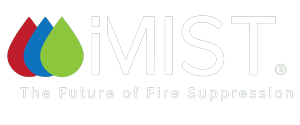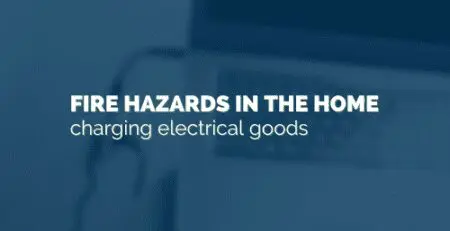Rachel Reeves’ Ambitious Planning Permission Changes: A New Era for UK Housing
In the ever-evolving landscape of UK politics, housing remains one of the most pressing issues facing the country. With a growing population and an ongoing housing crisis, the need for comprehensive reform is clear. Enter Rachel Reeves, the Labour Party’s Shadow Chancellor, who has recently outlined a bold vision for overhauling planning permission laws to address the housing shortage and promote sustainable development.
These changes aim to streamline development procedures, promote sustainable building practices, and ensure that housing and infrastructure projects can proceed more efficiently. This reform is expected to bring about a myriad of benefits, from accelerating the construction of much-needed homes to reducing bureaucratic hurdles for developers. In light of these changes, it’s crucial to explore how innovations in fire safety, such as the iMist Fire Suppression system, can play a pivotal role in supporting this new planning paradigm.
The Current State of Planning Permission
The UK’s current planning permission system is often criticised for being overly complex, slow, and a significant barrier to building new homes. Local authorities, mired in bureaucracy and under pressure from various interest groups, struggle to approve new developments promptly. This has led to a backlog of projects, with developers often facing lengthy delays and increased costs.
Rachel Reeves’ Vision for Change
Rachel Reeves proposes a series of transformative changes aimed at simplifying the planning permission process, making it more transparent, and accelerating the development of much-needed housing. Here are some of the key elements of her plan:
- Streamlining the Approval Process: Reeves aims to reduce the red tape involved in obtaining planning permission. By cutting down on unnecessary paperwork and standardising procedures across local authorities, the approval process can become quicker and more predictable for developers.
- Local Authority Empowerment: One of the core tenets of Reeves’ plan is to empower local authorities with more resources and decision-making capabilities. By providing additional funding and staffing, councils can handle applications more efficiently and effectively.
- Digital Transformation: Embracing technology is a significant aspect of Reeves’ vision. Implementing digital tools for submitting and reviewing applications can streamline processes and increase transparency. This includes the creation of a centralised online portal where all planning applications can be tracked and managed.
- Community Involvement: Reeves emphasises the importance of involving communities in the planning process. By fostering open dialogue between developers, local authorities, and residents, projects can be better tailored to meet local needs and gain public support.
- Sustainability and Green Building Standards: The push for more housing should not come at the expense of environmental sustainability. Reeves’ plan includes stricter green building standards to ensure new developments are energy-efficient and environmentally friendly.
Integrating iMist Fire Suppression’s Water Mist System
A crucial component of modern, sustainable housing is ensuring the safety and resilience of new buildings. One innovative solution is iMist Fire Suppression’s water mist system. This advanced fire suppression technology offers several benefits that align perfectly with Rachel Reeves’ vision for a reformed housing sector.
- Enhanced Safety: iMist’s water mist system provides superior fire suppression compared to traditional sprinkler systems. It uses fine water mist to cool the flame and surrounding gases, thus reducing the heat, oxygen, and fuel that fires need to spread.
- Water Efficiency: The system uses significantly less water than conventional sprinklers, making it an environmentally friendly option. This efficiency not only conserves water but also minimises water damage in the event of a fire, reducing the overall impact on property and residents.
- Versatility and Integration: iMist systems are suitable for a variety of building types, from residential homes to commercial properties. Their compact design makes them easier to install, especially in retrofitting projects, which can be particularly beneficial in refurbishing older buildings to meet modern standards.
- Cost-Effectiveness: By reducing water usage and potential water damage, iMist systems can lower repair and potentially even insurance costs for homeowners and developers, making them a cost-effective fire safety solution in the long term.
Potential Impact of the Reforms
If implemented, Reeves’ proposed changes, coupled with innovative solutions like the iMist water mist system, could have a profound impact on the housing market and the broader economy. Here are some potential benefits:
- Increased Housing Supply: By speeding up the planning process, more homes can be built in a shorter timeframe, helping to alleviate the housing shortage.
- Economic Growth: The construction industry is a significant driver of economic activity. Faster approvals mean more projects can get off the ground, creating jobs and stimulating local economies.
- Enhanced Quality of Life: More housing options can lead to more affordable prices, reducing the financial burden on families and individuals. Additionally, incorporating green and safe building standards ensures that new homes contribute to a healthier and safer environment.
- Community Cohesion: Greater community involvement in the planning process can lead to developments that better reflect the needs and desires of local populations, fostering a sense of ownership and pride.
Challenges and Criticisms
While the proposed changes are ambitious, they are not without challenges. Critics argue that simplifying the process might lead to lower standards and insufficient scrutiny of new developments. There is also concern about the balance of power between developers and local communities, with some fearing that local voices might be overshadowed by corporate interests.
Furthermore, the successful implementation of these reforms requires significant investment in local authorities and digital infrastructure, which may be difficult to secure in the current economic climate.
Conclusion
Rachel Reeves’ proposed planning permission changes represent a bold step towards addressing the UK’s housing crisis. By streamlining processes, empowering local authorities, and embracing technology, these reforms have the potential to significantly boost housing supply and promote sustainable development. Integrating advanced solutions like iMist Fire Suppression’s water mist system can enhance the safety and sustainability of new developments, aligning with the broader goals of Reeves’ vision.
As the political landscape continues to evolve, monitoring how these proposals are received and whether they can translate into tangible improvements in the UK’s housing market will be crucial. Whether you are a developer, a policymaker, or a concerned citizen, Rachel Reeves’ vision for planning reform, combined with innovative fire suppression solutions, is a topic that warrants close attention and thoughtful discussion.











